Future of Locarno Film Festival lies in discreet charm of new president
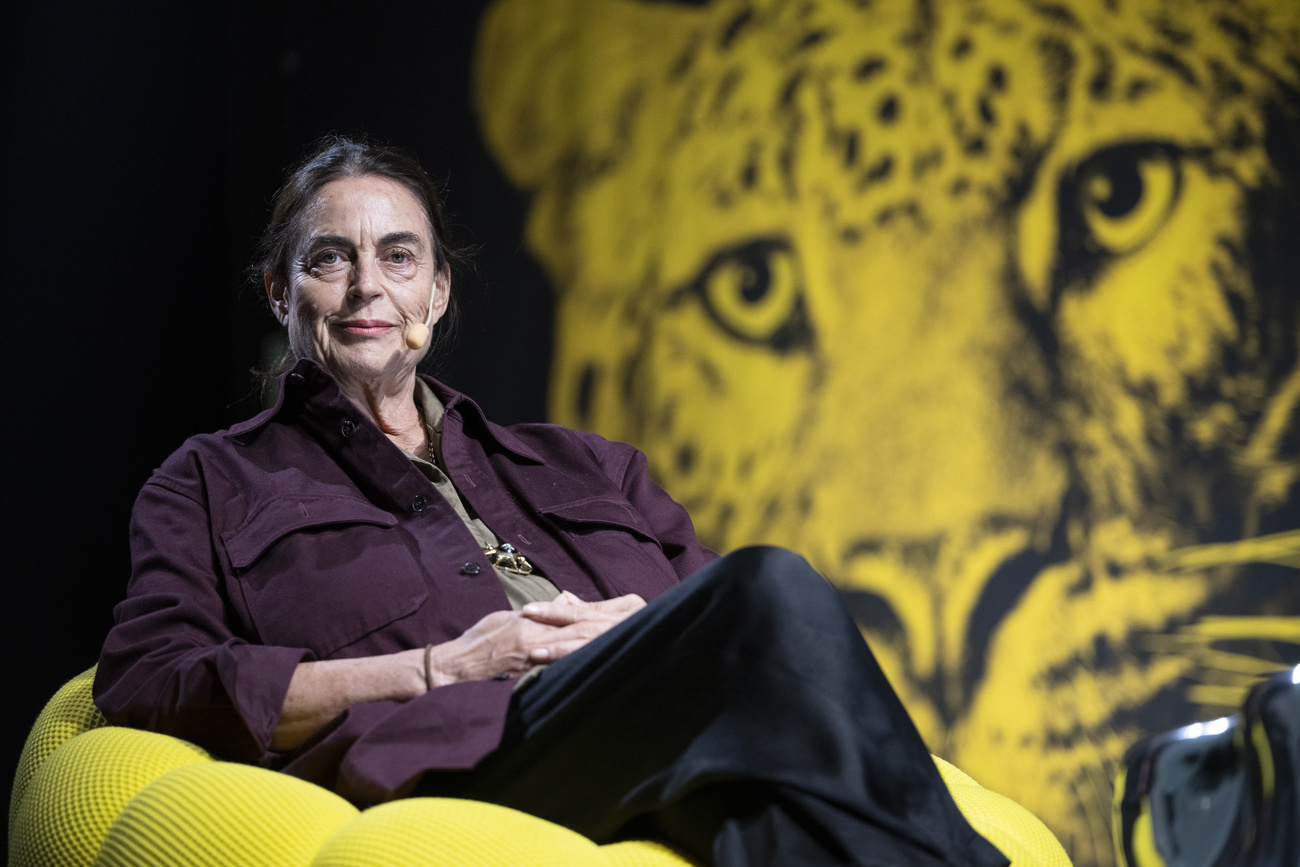
Switzerland’s most prestigious film festival, which starts on Wednesday, remains a cinephile paradise. But behind the screens, its new president Maja Hoffmann is steering the festival closer to her global artistic connections.
Discretion is a billionaire’s best friend, and Maja Hoffmann is certainly discreet. She appears in the media only when she wants to or needs to, even when running high-profile acts, such as the LUMA Foundation for contemporary arts, and now, the Locarno Film Festival.
After her appointment in October last year, she did not announce a major organisational upheaval. But in the run-up to the festival, she sprinkled enough breadcrumbs to indicate she is now in charge, leaving us to interpret how she plans to run the show. For clues, one can start by comparing her gestures to those of her predecessor, Marco Solari, who presided the festival from 2000 to 2023.
Solari has the airs and gestures of an Italian grand seigneur, but he is more of a successful entrepreneur than scion of a patrician family. Very well-connected in political, religious, media and economic circles within Switzerland and Italy, Solari was always very careful in forging political and financial support not just for the film festival, but also for many other cultural events in Ticino.
Solari’s administration was fundamental to anchor the film festival as a national institution, stitching connections throughout the linguistic regions of Switzerland and securing its funds with a smart private-public mix of donors and sponsors.
When he announced his retirement last year, the appointment of Maja Hoffmann as his successor came as quite a surprise.
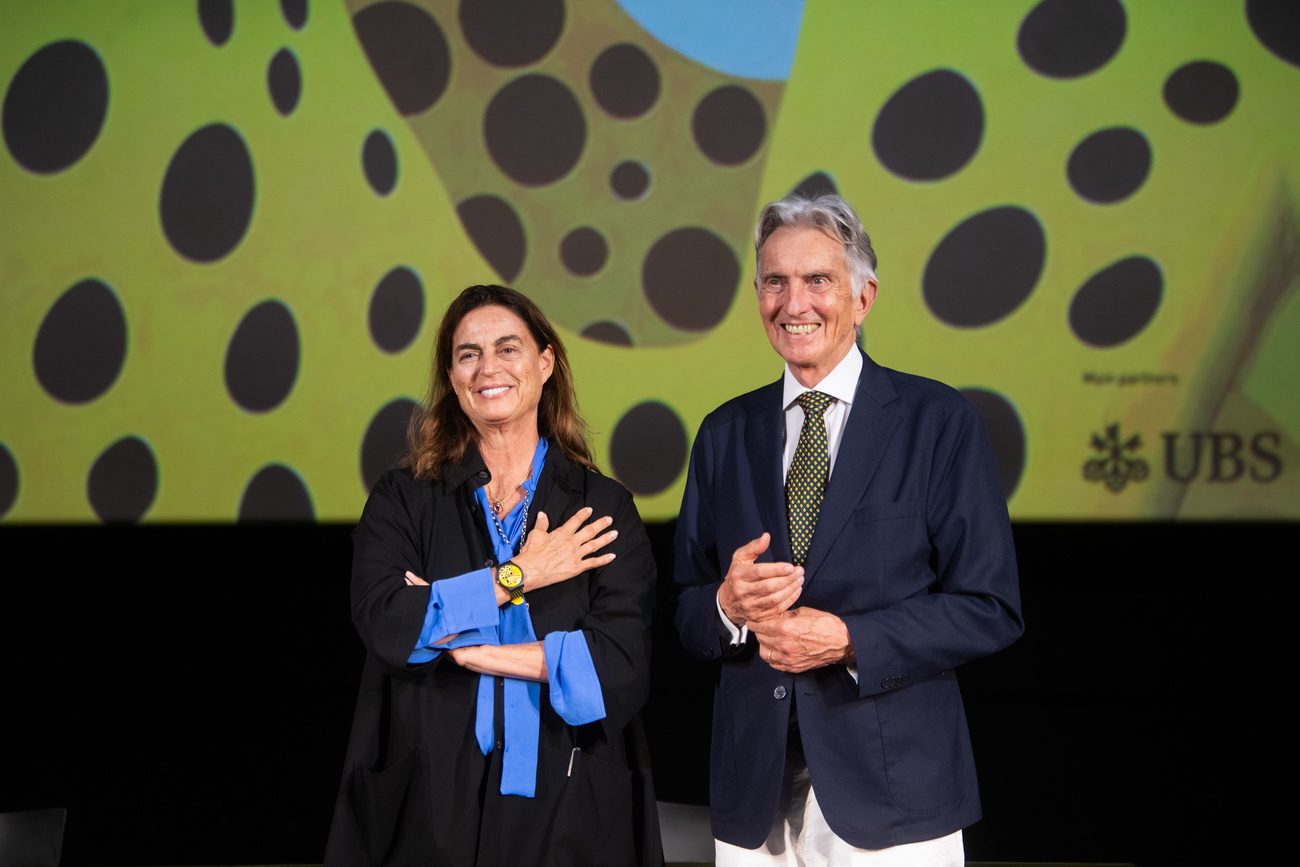
The ground beneath her feet
Hoffmann stems from a billionaire family, heirs of the pharmaceutical giant Roche. Originally from Basel, in the German part of Switzerland, she was raised in France, has very loose ties with Ticino, doesn’t speak Italian (at least not in public), and is internationally renowned as a collector and patron of the arts.
Her LUMA Foundation, with spaces in Zurich, Arles (France), Gstaad (Switzerland), London and Mustique (a private island in the West Indies), is known not just as a platform for multiple artistic activities and research but also for its main building in Arles, designed by architect Frank Gehry.
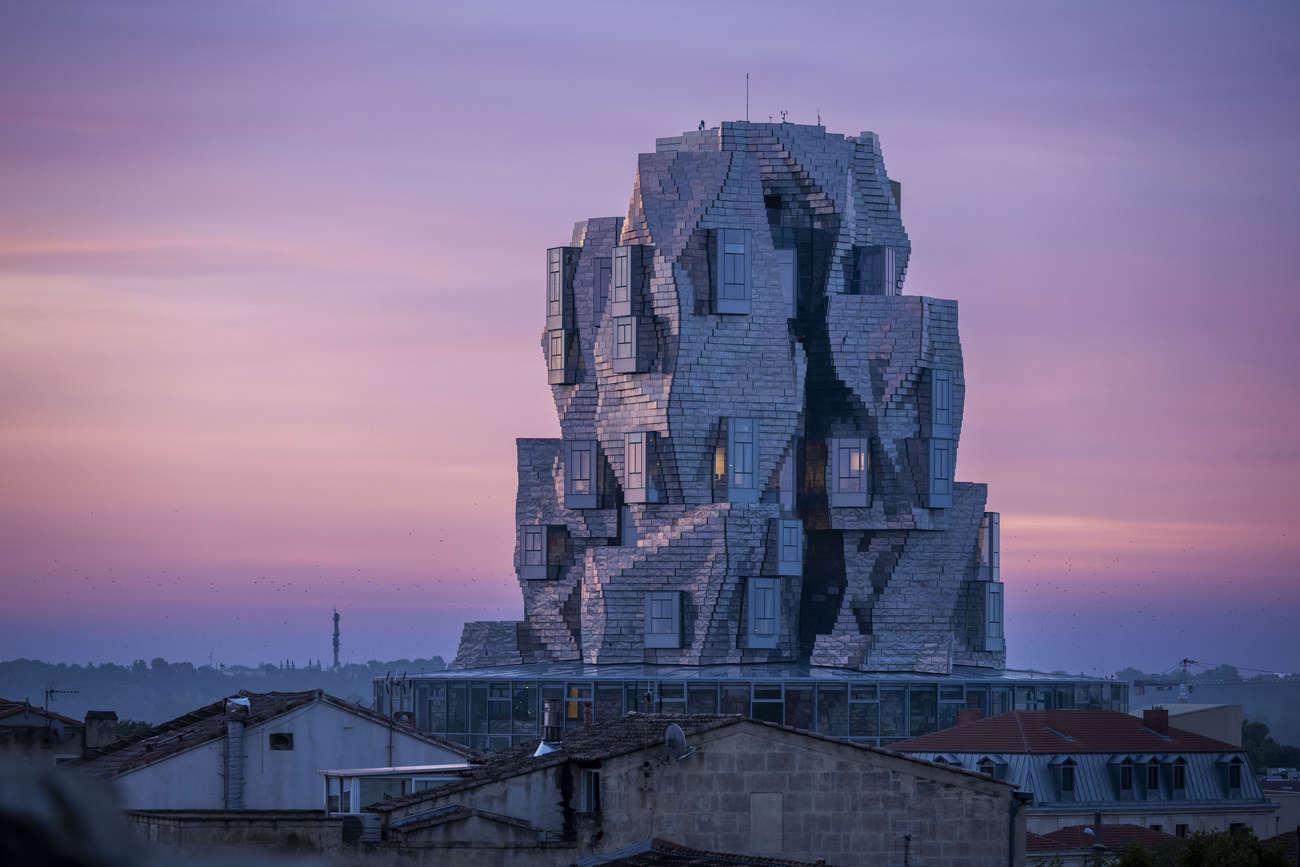
Nonetheless, the new president of the Locarno Film Festival is not a neophyte in the film business. She studied cinema in New York and was executive producer of several documentaries. Her partner, Stanley Buchthal, is a film producer.
Changes in protocol
Every January the Locarno Film Festival organises a cocktail during the Solothurner Filmtage, the film festival dedicated exclusively to Swiss cinema. In an informal setting, Locarno’s board members and its main heads – artistic director Giona A. Nazzaro, managing director Raphaël Brunschwig, and the festival’s president – host the press, donors and sponsors and announce the theme of the Locarno retrospective, one of its most coveted sections.
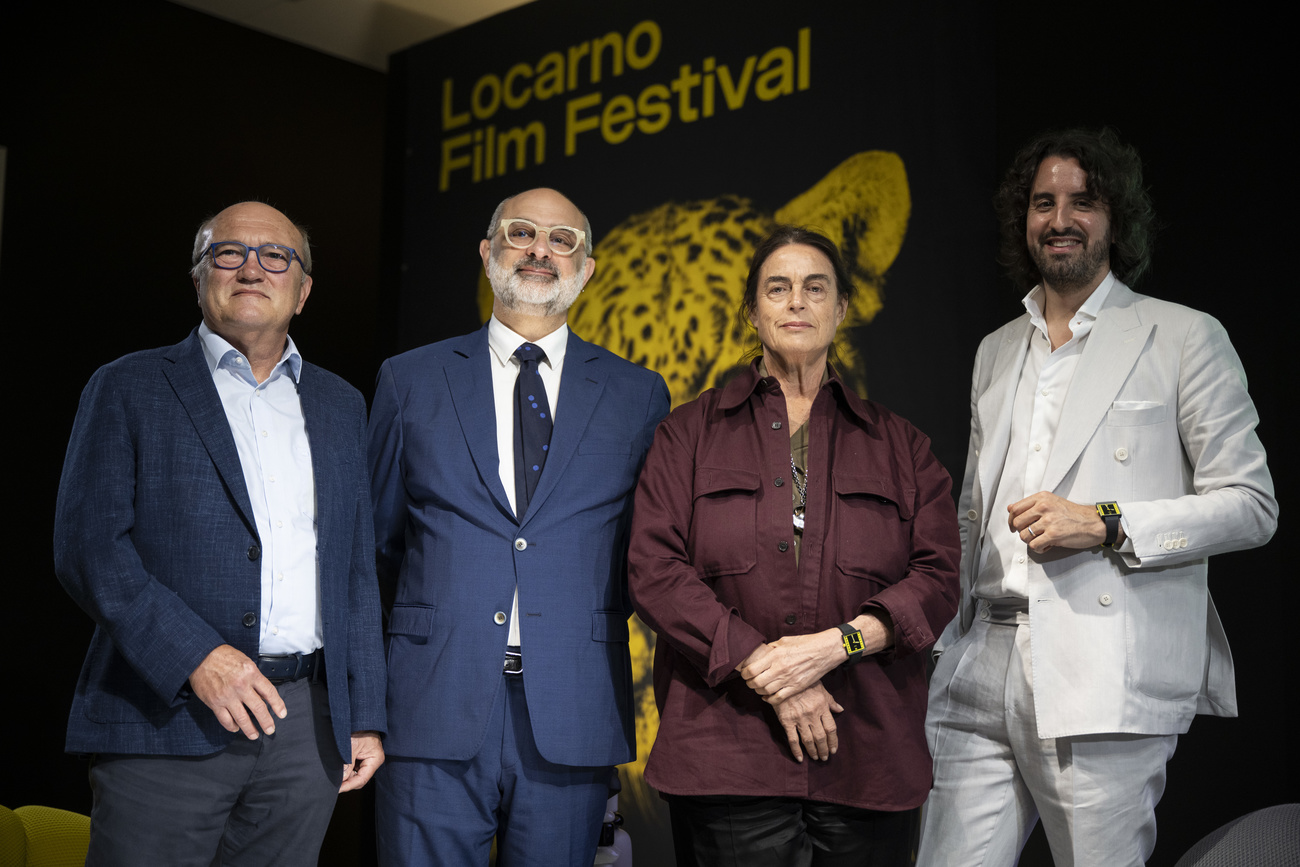
This year, however, attendees arrived to a different, more modest, location, with wine and canapés, yes, but with nobody to talk to. The press, including your correspondent, were told on site that Hoffmann had decided last minute to take her directors on a working trip to the Sundance Film Festival, in the United States, instead. The message was clear: Locarno needs to be more present on the global scene.
Hoffmann’s next public move was the official announcement of the programme, in early July.
The Locarno Film Festival usually starts a month before the official opening with a press conference where its heads present the programme and the list of invitees, awardees and highlights. Under Solari, the presentation of the festival was traditionally set in the Swiss capital, Bern.
It always included several dignitaries of the Swiss political class, as well as authorities and government officials from the Italian-speaking canton of Ticino (where Locarno is located) and canton Bern. Solari’s speeches switched naturally from German to Italian to French, symbolically covering the Swiss cultural diversity and stressing the national character of the festival.
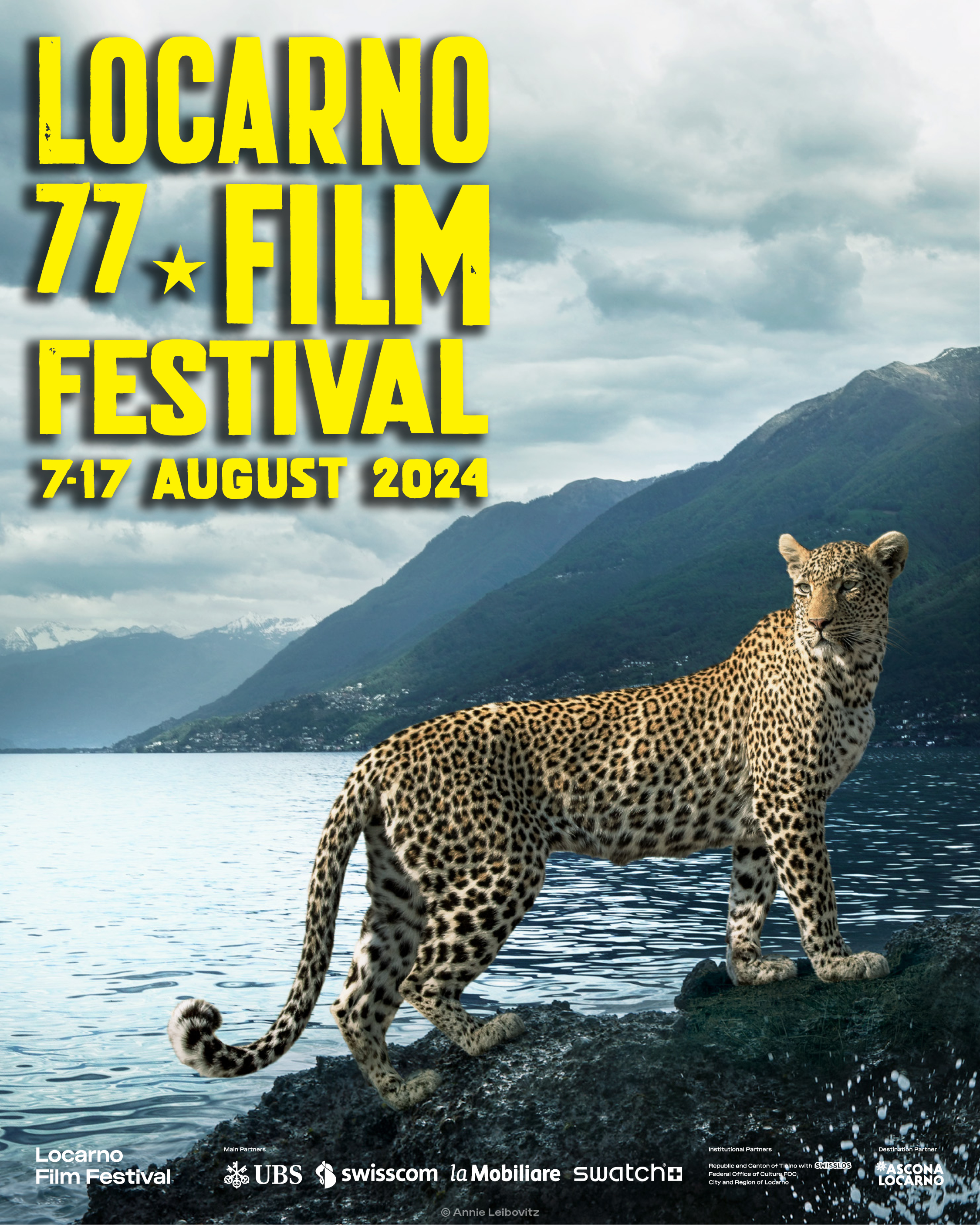
Hoffmann scrapped Bern to stage the conference in the Zurich headquarters of the LUMA Foundation. There were no national or local politicians or dignitaries present, only the press, and the event was broadcast live online. The language spoken on the stage was German. Maja Hoffmann made her address in English.
As the artistic director Giona A. Nazzaro presented the programme, more subtle messages could be grasped. Solari used to limit his presentation to an institutional address, respecting protocol conventions such as formally naming the dignitaries present and leaving the floor to the artistic director to present his programme. This year, several times in his address, Nazzaro acknowledged Hoffmann’s contributions in the selection of films and facilitating contacts to get them for Locarno.
Hoffmann also threw her weight in the choice of the poster design. The trademark leopard now is not a designed representation of the animal as is usually the case every year, but a picture of a leopard shot by the American star photographer Annie Leibovitz, a personal friend of Hoffmann’s.
Going glocal
Hoffmann’s style, thus, is beginning to take shape. While being more present in the curatorial process than her predecessor, she seems to be less concerned with the conventions of national institutions and politics. At the helm, she is seeking to involve the festival in the global networks that overlap the film world’s elite circles and the fine arts scene.
Hoffmann’s approach can be hailed as a bold but necessary evolution of Locarno’s stand in the international festival circuit. Under Solari, the festival consolidated its position as the “smaller among the giants (Cannes, Berlin, Venice) and the bigger among the smaller” – and as a preferential showcase for new talents worldwide. But the film festival market is increasingly fast-paced and the competition for titles and premieres ever tighter.
Bearing this in mind, Hoffmann’s strategy seems to focus on Locarno’s brand. On one hand, to secure Locarno’s future she needs to promote its name more aggressively on a global scale. At the same time, to secure the quality of the brand, she also has to guarantee that the festival keeps true to its cinephile principles and as a platform for new concepts and ideas.
It is not a hard balancing act: while Hoffmann opens doors in the international circuit, she can count on an artistic director (Nazzaro) who is also a respected film critic and who naturally embodies the Locarno spirit, as well as on a professional team and the institutional net left by Solari. But the first real test of the new direction starts on Wednesday, and for the next ten days we will be looking for more concrete signals.
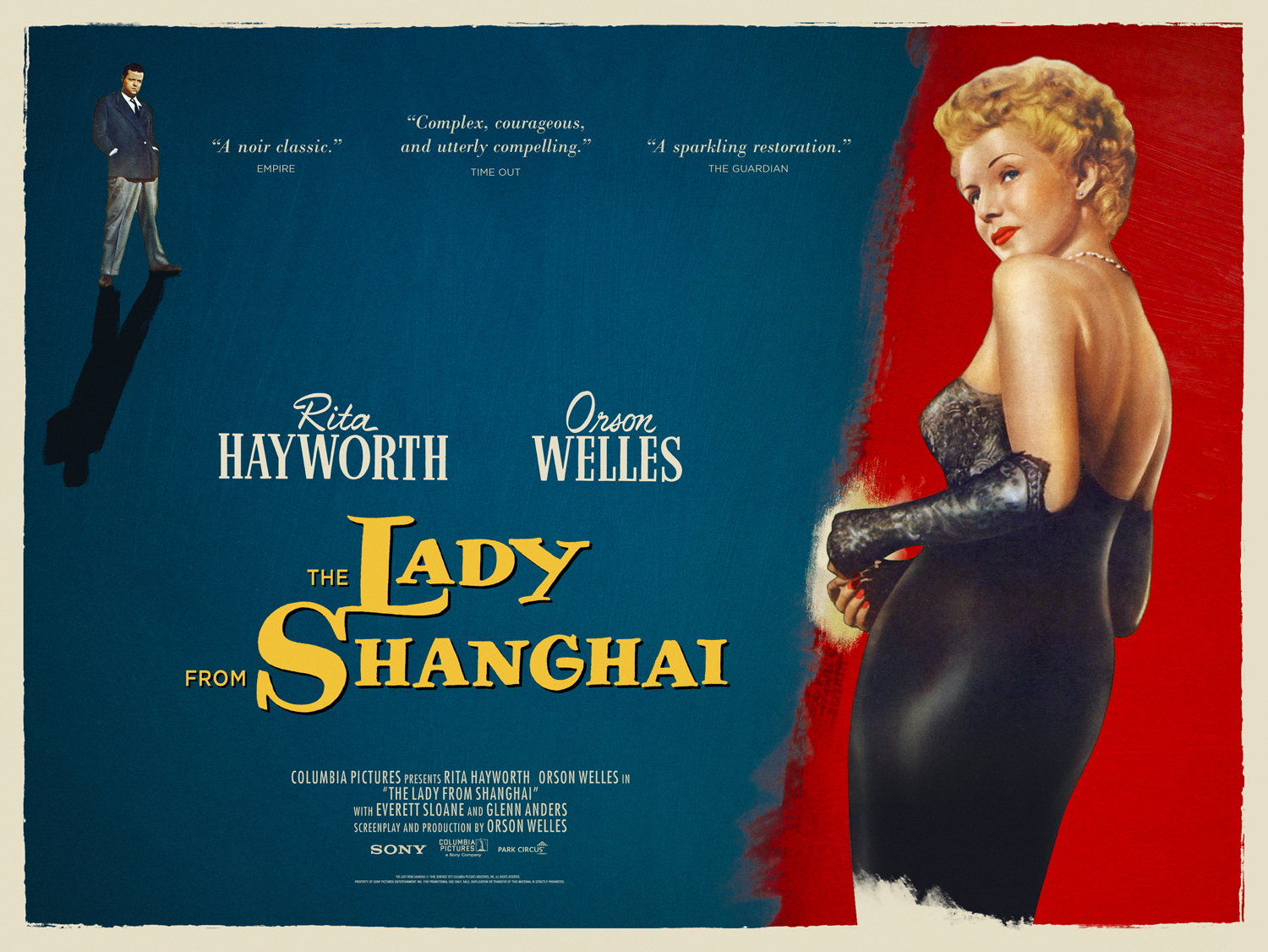
The stars in Locarno are primarily the films and not the celebrities. This year, though, it brings from India the biggest star of Bollywood, Shah Rukh Khan; the Swiss-French actress Irène Jacob (more recently seen at the Berlinale in Amos Gitai’s Shikun); the Swiss animation wizard Claude Barras, of My Life as a Zucchini; and Jane Campion, the first woman to win the Palme d’Or in Cannes (for The Piano) and the first nominated twice for the Oscar of best director.
Locarno’s “Retrospettiva” (retrospective) section is always one of its main highlights, bringing gems from the long history of cinema to the delight of film buffs and general audiences. This year it celebrates the centenary of the legendary American studio Columbia Pictures with a selection of films from the early sound era to the late 1950s, curated by the London-based Iranian critic and filmmaker Ehsan Khoshbakht.
In the same vein, the festival pays homage to the American film author Stan Brakhage (1933-2003), one of the most influential authors of experimental films of the 20th century. Movie-goers will have the rare privilege of watching eight of his works on the big screen.
The main competitions offer a world tour of cinematic novelties. Seventeen films dispute the Pardo d’Oro (Golden Leopard) and 15 others compete in the Concorso Cineasti del Presente, for filmmakers presenting their first or second features.
You can check out the full programme here External linkand follow SWI swissinfo.ch’s special coverage of the festival, in partnership with Locarno’s Critics Academy, a selection of young film and arts writers from all over the world which will explore the programme throughout the whole festival.
Edited by Virginie Mangin/ts

In compliance with the JTI standards
More: SWI swissinfo.ch certified by the Journalism Trust Initiative
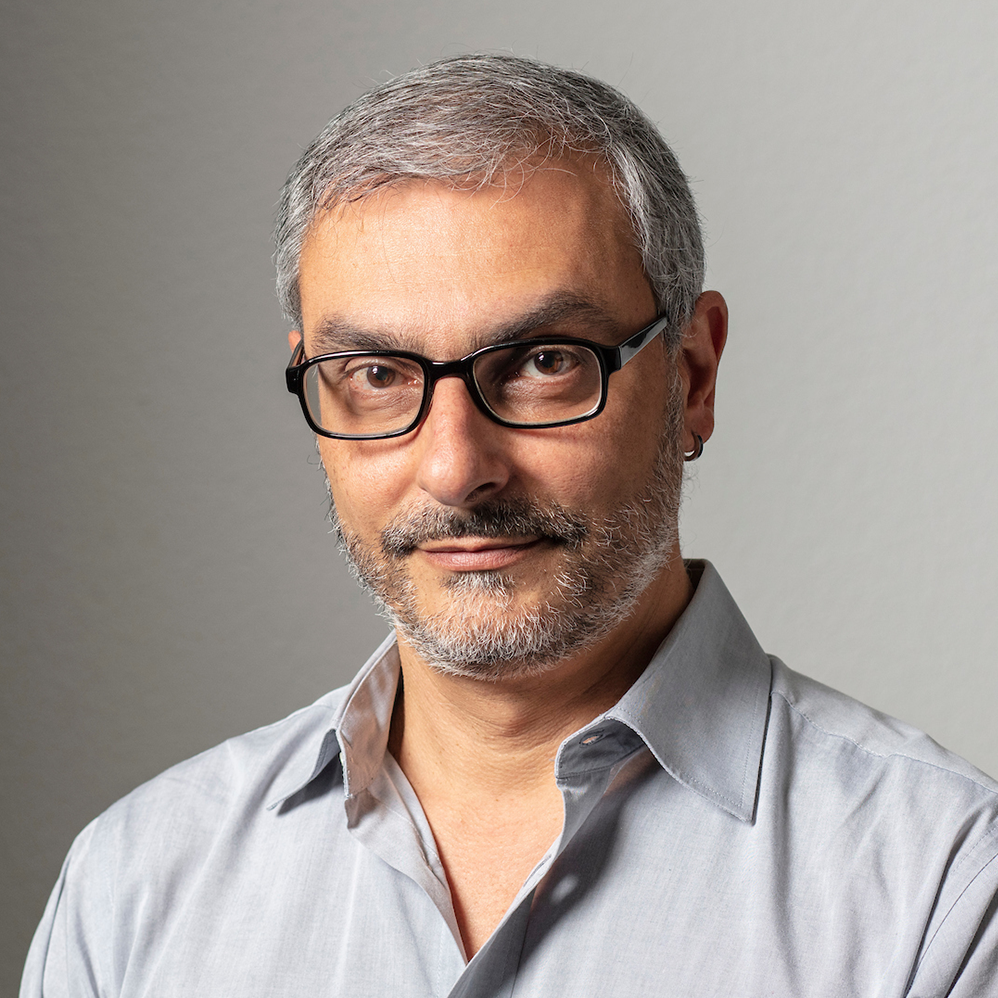








You can find an overview of ongoing debates with our journalists here . Please join us!
If you want to start a conversation about a topic raised in this article or want to report factual errors, email us at english@swissinfo.ch.